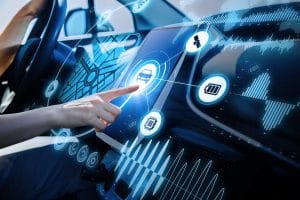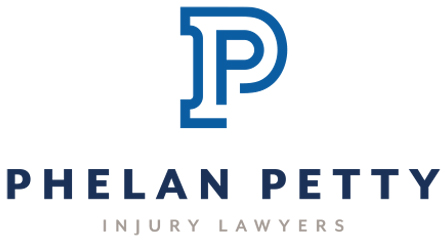Are In-Vehicle Technologies Driving Distractions?
 Driver-assist technologies like automatic braking, back up cameras, and lane or blind spot warning systems seek to limit human driving errors to increase road safety. These technologies hold great promise for reducing car and other vehicle accidents and protecting road users from serious injury and death. But what if some new technologies installed in cars have the potential to actually increase driver distraction and human error?
Driver-assist technologies like automatic braking, back up cameras, and lane or blind spot warning systems seek to limit human driving errors to increase road safety. These technologies hold great promise for reducing car and other vehicle accidents and protecting road users from serious injury and death. But what if some new technologies installed in cars have the potential to actually increase driver distraction and human error?
An issue with the “Passenger Play” video game functionality in Tesla’s 2017 – 2022 Model 3, S, X, and Y vehicles raised this question in late December 2021, after an owner complained to the National Highway Traffic Safety Administration (NHTSA) that certain video games could be played on his center console touch screen while driving. The Washington Post reported that Vince Patton happened to see a YouTube video created by another Tesla owner demonstrating the video game playing on the console, so he took his car to an empty parking lot to check the function on his own vehicle. Patton was “dumbfounded” when he discovered he could activate some sophisticated games from the menu and even browse the internet while the car was moving. Patton was “worried that drivers would play games and become dangerously distracted” and that “[s]omebody’s going to get killed.” Patton filed a complaint with NTHSA, stating the “NHTSA needs to prohibit all live video in the front seat and all live interactive web browsing while the car is in motion,” and that “[c]reating a dangerous distraction for the driver is recklessly negligent.”
The Washington Post reported that the Passenger Play issue affected 580,000 other Tesla vehicles. Before December 2020, Passenger Play could be used only when a vehicle was in Park. The games became available while cars were being driven after Tesla issued an update to software. Although the update required users to confirm they were passengers, drivers could click through and play, and regardless of player, the video games would project on the large center console in view of the driver.
NHTSA and safety organizations have indicated concern about driver distraction from the design of integrated in-vehicle, electronic devices for some time, but as with the response to cell phones and texting, will safety research, and NHTSA and state safety legislation be able to keep pace with innovations?
Infotainment systems and upgraded technologies are cause for concern
While the first Passenger Play gaming reports were coming out, Mercedes-Benz issued a U.S. recall for a few hundred vehicles because the infotainment system allowed television and internet access during driving, causing some to question if Tesla vehicles were being monitored closely enough. The Ford Motor Company® also recently patented an as-yet unused technology supporting in-car advertising. If talking on a phone and texting create dangerous distraction, what will large touch screens with multiple capabilities to project information and images while driving do to drivers?
The National Safety Council’s “Position/Policy Distracted Driving on the Roadways” issued in February 2021 recognizes “handheld electronic device bans are a step in the right direction,” but also sees dangers in using any electronic devices while driving, including dashboard touchscreens. The NSC policy states, “Drivers should not manipulate electronic devices, including voice-command systems or interactive in-vehicle technology (such as dashboard touchscreens) while driving. Drivers should send or answer texts and emails, program navigation systems, and set-up radio stations and playlists before or after driving.” Recent studies also suggest that in-vehicle infotainment centers consoles create dangerous distractions for teens and some groups of older drivers. As controls and touch screens get larger and more complex, some designers question if these items can be designed not to take away “cognitive resources from the basic task, which is driving.”
NHTSA responded to Patton’s complaint by instituting an investigation through its Office of Defects Investigation (ODI). The ODI initially confirmed that Passenger Play equipped vehicles had indeed allowed video games to be played on the center touch screen while the car was being driven since December 2020. The ODI then opened a Preliminary Evaluation “to evaluate the driver distraction potential of Tesla ‘Passenger Play’ while the vehicle is being driven.” The following day, NHTSA stated that Tesla issued a software update locking the Passenger Play function on the touch screen when its vehicles were in motion, but that the ODI investigation would continue.
Has technology increased driver distraction?
Distracted driving occurs when a driver mentally, visually, or physically diverts their attention from driving to focus on another task, even for a moment, and may involve any combination of these distractions. Visual distraction happens when a driver takes their eyes off the road. In manual distraction, the driver takes their hands off the wheel, and in cognitive distraction, the driver’s mind moves off driving to another subject.
NHTSA recognizes distracted driving as one of the leading causes of deaths in vehicle accidents, attributing 3,142 deaths to distracted driving in 2019. NHTSA identifies texting as an exceptionally dangerous form of distracted driving, because the average text diverts the drivers’ attention from the road for five seconds, which “[a]t 55mph, [is] like driving the length of an entire football field with your eyes closed.”
But it took federal agencies and state governments some time to understand that the rise of cell phone use and texting were generating new and dangerous forms of driver distraction, ultimately ranking them with alcohol and speeding as leading factors in serious injuries and deaths from accidents. By 2011, the National Transportation Board (NTSB) called for a nationwide ban on cell phone use while driving, with Chairman Debra A.P. Hersman remarking, “No call, no text, no update is worth a human life.” In 2012, the National Safety Council (NSC) examined data from NHSTA and other sources, and called for states to institute bans on both handheld and hands-free devices while driving. Even as technologies continued to develop during the intervening decade, much of the focus on distracted driving remained on handheld cell phone use and texting, and on teens. According to the National Conference of State Legislatures, only about 24 states have banned handheld cell phone use while driving, no states ban all uses, and some states ban both handheld and hands-free cell phone use for teens and certain classes of drivers, while 48 states ban texting. In January 2021, Virginia joined other states in eliminating texting and handheld cell phone use by all drivers. Meanwhile, in-vehicle electronic centers and infotainment centers were being installed in cars and trucks.
If you or someone you love is injured or killed in a motor vehicle accident due to distracted driving, Phelan Petty can help. Our experienced Richmond accident lawyers represent victims in car, truck, and motorcycle accidents throughout Virginia. To schedule a free consultation, call us in Richmond at 804-980-7100 or fill out the contact form.
Michael Phelan is a Virginia trial attorney who practices with a special focus on traumatic brain injury (TBI) cases, pharmaceutical and medical device claims, product liability cases, and truck accidents. Michael’s peers have consistently recognized him for his excellence as a trial lawyer, and his clients have praised him for his commitment to deep research, his outstanding communication skills, and his sincerity and dedication.
